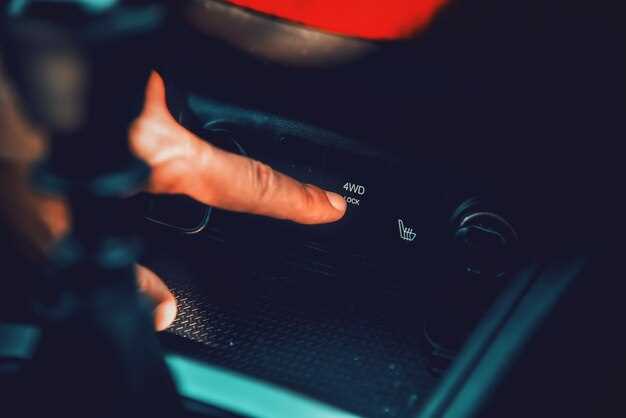
Sports cars are engineered for performance, delivering exhilarating speed and handling. However, as with any high-performance vehicle, issues can arise, particularly related to the transmission. One common problem is transmission slippage, which can significantly affect driving experience and car performance.
Transmission slippage occurs when the clutch fails to engage or disengage properly, leading to a loss of power transfer between the engine and the wheels. This can happen due to various factors, including wear and tear on components or incorrect fluid levels. Recognizing the signs of slippage early is crucial for preventing more severe damage, making it essential for sports car owners to be vigilant.
Common symptoms of slip include an unexpected increase in engine RPM without a corresponding acceleration, delayed gear shifts, or a noticeable burning smell from the clutch area. By understanding these indicators, drivers can take prompt action to address transmission issues, ensuring their sports car remains in optimal condition for high-performance driving.
Common Symptoms of Transmission Slip in Sports Cars

Transmission slip in sports cars can significantly affect performance and driving experience. One of the primary symptoms is an unusual increase in engine RPM without a corresponding increase in vehicle speed. This discrepancy indicates that the transmission is struggling to adjust to the vehicle’s power demands.
Another common sign is a delay in gear engagement when accelerating. If the car hesitates before shifting into the next gear, it could suggest that the transmission is experiencing slippage due to wear or damage. Drivers may also notice that gear shifts feel harsh or occur at unexpected intervals, which can indicate underlying issues within the transmission system.
Additionally, strange noises such as grinding or whining while shifting gears can be a clear indication of transmission slippage. These sounds may arise from malfunctioning components that have suffered from excessive wear and tear.
Finally, the presence of fluid leaks underneath the vehicle can signal transmission problems. Low transmission fluid levels can exacerbate slipping issues. Regular checks and maintenance can help prevent serious damage and ensure optimal performance of the sports car’s transmission system.
Diagnosing Clutch Wear and Its Impact on Performance
The clutch plays a crucial role in the performance of a sports car, directly influencing the efficiency of the transmission system. As the primary interface between the engine and transmission, a worn clutch can lead to significant performance issues, including slippage and poor acceleration.
Identifying signs of clutch wear is essential for maintaining optimal performance. Common symptoms include difficulty in engaging gears, an unusual increase in engine RPM without a corresponding increase in vehicle speed, and a burning smell during operation. These indications suggest that the clutch may not be fully engaging, leading to transmission inefficiencies.
Over time, the friction material of the clutch disc wears down due to repeated engagement and disengagement. This wear reduces the surface area available for effective grip, ultimately causing slippage. When slippage occurs, the engine power cannot be effectively transmitted to the wheels, resulting in a loss of acceleration and responsiveness–key characteristics desired in sports cars.
Regularly inspecting the clutch system, including the pressure plate and release bearing, can prevent performance degradation. Mechanics should check for signs of heat damage, which can further compromise the clutch’s functionality. Additionally, monitoring the clutch pedal’s feel and travel distance can provide insight into its condition.
To enhance performance and address issues related to clutch wear, timely replacements or upgrades may be necessary. High-performance clutches are designed to withstand greater stress and provide improved grip, ensuring that the transmission operates efficiently and effectively.
In conclusion, diagnosing clutch wear is vital for maintaining the performance integrity of a sports car. By recognizing the symptoms early and addressing them promptly, drivers can prevent more serious transmission problems and enhance their driving experience.
Testing Techniques for Transmission Slippage Issues

Identifying transmission slippage in sports cars is crucial for maintaining performance and reliability. Several testing techniques can effectively diagnose these issues, focusing on the transmission system, wear patterns, and clutch functionality.
One of the primary assessment methods involves conducting a visual inspection of the transmission fluid. Discolored or burnt fluid often indicates overheating and wear, leading to slippage. Regular checks can help detect early signs of deterioration.
Additionally, performing a road test provides insights into the vehicle’s behavior under various conditions. Observations during acceleration or deceleration can reveal inconsistent power delivery, a common symptom of clutch wear or malfunctioning transmission components.
A more technical approach involves using diagnostic tools to read fault codes from the vehicle’s onboard computer system. This data can pinpoint specific issues related to the transmission, including clutch engagement problems and sensor failures.
Furthermore, a pressure test can effectively evaluate the transmission’s hydraulic system. Inadequate pressure can result in poor clutch engagement, leading to slippage. Testing for proper hydraulic pressure inclusively at different RPMs enables technicians to understand the overall health of the transmission.
Lastly, examining the clutch assembly directly can reveal wear and tear, which can significantly affect transmission performance. Measuring the thickness of the clutch disc and checking for signs of glazing or cracking are essential steps in assessing clutch health.
| Testing Method | Description | Purpose |
|---|---|---|
| Fluid Inspection | Check for discoloration and burning | Identify overheating and wear |
| Road Test | Observe vehicle behavior during acceleration | Detect inconsistent power delivery |
| Diagnostic Scan | Read fault codes from onboard computer | Pinpoint specific transmission issues |
| Pressure Test | Evaluate hydraulic system pressure | Ensure proper clutch engagement |
| Clutch Assembly Inspection | Examine for wear, thickness, and damage | Assess overall clutch health |
Recommended Maintenance Practices to Prevent Transmission Slip
Preventing transmission slip in sports cars requires diligent maintenance practices that focus on key components, such as the clutch and transmission fluid. Regularly scheduled checks and replacements will help ensure optimal performance and longevity.
First and foremost, keeping the clutch system in good condition is essential. Regular inspection of the clutch for wear and tear can help detect issues before they lead to transmission slip. If the clutch shows signs of excessive wear, such as a spongy feel or slipping during acceleration, it should be replaced promptly to maintain proper engagement and disengagement.
Additionally, monitoring and changing the transmission fluid according to manufacturer recommendations is crucial. Fresh transmission fluid not only provides lubrication but also helps in cooling the transmission, reducing the risk of overheating that can cause slip. Contaminated or low fluid levels can lead to inadequate hydraulic pressure, resulting in potential slipping issues.
Furthermore, it’s vital to ensure that the transmission is properly calibrated. Misalignment or incorrect adjustments can contribute to slipping. Regularly updating or recalibrating the transmission control module, if applicable, can mitigate these risks.
Lastly, paying attention to driving style can also play a role in preventing transmission slip. Avoiding aggressive driving habits, such as rapid acceleration and abrupt shifts, can reduce undue stress on the clutch and transmission. Educating drivers about smooth gear changes can enhance the overall lifespan of these critical components.
Tools Needed for Transmission and Clutch Inspection
Inspection of the transmission and clutch system is crucial to identify potential issues such as slip or wear, which can significantly affect the performance of sports cars. Below is a list of essential tools required for a comprehensive inspection.
- Torque Wrench: Ensures that bolts are tightened to the manufacturer’s specifications to prevent excess wear on transmission components.
- Transmission Fluid Tester: Measures the quality of the fluid, which can indicate wear levels and operational efficiency.
- Pressure Gauge: Used to check the hydraulic pressure in the clutch system, which is vital for proper operation and can help identify slipping issues.
- Inspection Mirror: Allows for visual inspection of hard-to-reach areas in the transmission and clutch assembly.
- Magnetic Pickup Tool: Useful for retrieving any metal shavings or debris from the transmission fluid, indicating wear.
- Dial Indicator: Measures any play in the clutch and transmission components, which can help detect abnormal wear patterns.
In addition to these tools, it’s essential to have a clean work environment and proper safety gear, including gloves and glasses, to protect against any hazardous materials during the inspection process. By using the above tools, mechanics can accurately assess the transmission and clutch systems for any signs of slip and wear, preventing further damage and ensuring optimal performance.
When to Seek Professional Help for Transmission Problems
Identifying issues with your car’s transmission is crucial for maintaining performance, particularly in sports cars where high efficiency is expected. If you notice signs such as unusual sounds, slipping during shifts, or delayed engagement, it may indicate underlying problems with the transmission system. Ignoring these symptoms can lead to more severe damage and costly repairs.
One key indicator that you should seek professional help is the presence of clutch wear. If the clutch feels spongy or requires a higher engagement point, it may not be functioning correctly. This could impact your transmission’s overall performance, leading to further complications if not addressed promptly.
Additionally, any warning lights on your dashboard related to the transmission should not be overlooked. These alerts are your car’s way of notifying you that there is an issue that requires immediate attention. The transmission is a complex component, and diagnosing the exact cause of a malfunction often requires the expertise of a professional.
If you experience difficulty in shifting gears, especially under heavy acceleration, or if the vehicle hesitates during acceleration, it’s essential to consult a mechanic. These symptoms can stem from various issues, including low transmission fluid levels or problems with the internal components. A professional will be able to assess the wear and condition of the transmission and recommend the necessary actions to restore its performance.
Ultimately, proactive maintenance is key to ensuring your sports car operates at its best. Regular inspections and timely repairs can prevent minor issues from escalating into significant transmission problems. If you are uncertain about the condition of your transmission or clutch, seeking professional help is always a wise decision.
